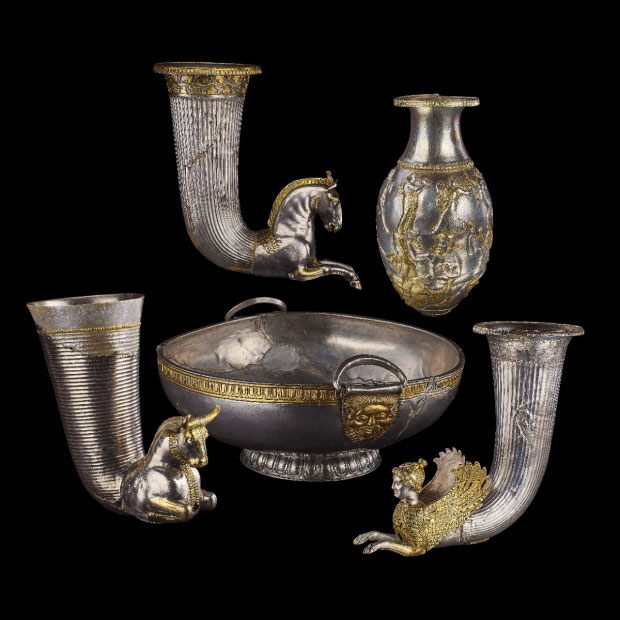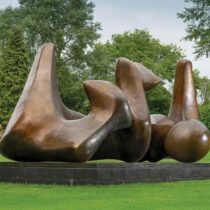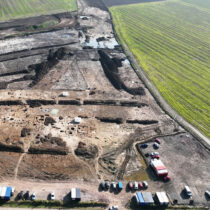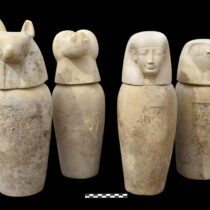The exhibition of seldom-seen ritual objects from the Neolithic Period through the Iron Age opened on Sept. 21, and is free and open to the public.
Figurines, tools and weapons, miniature architectural models, adornments in gold and amber, bronze vessels, and more: all were excavated from a region in Europe stretching from the Balkan Mountains north to the Carpathian Basin. Many of these artifacts once aided communication with the gods, or were used by the communities that created them in order to understand identity in an earthly realm. Although no textual sources from the prehistoric cultures of this region have come down to us through time, the artifacts themselves, as well as the locations of their discovery, have led scholars to believe that these works served potent ritual functions. Each artifact offers a glimpse into the world view and the ways of life of these ancient communities, but also raises questions. How did objects like these participate in cultural practices that are largely a mystery to us? Can a memory of these long-silent civilizations be recovered?
Ritual and Memory—an exhibition to run through Feb. 19 by New York University’s Institute for the Study of the Ancient World at 15 East 84th Street, just off Fifth Avenue—displays works from the Neolithic Period (about 8,000 years ago) through the Iron Age (about 2,500 years ago). Showcasing seldom-exhibited ritual objects used by men and women, warriors and wives, kings and farmers, in celebrations and in funerals, this exhibition invites us to consider beliefs, ritual practices, and community organization in the ancient civilizations of the Balkan region. Visitors will also discover that these archaeological finds demonstrate great technological accomplishment and significant intercultural connections between various groups in this area and beyond.
With a display that includes more than 200 artifacts, the Institute for the Study of the Ancient World (ISAW) invites visitors to consider the worldviews, ceremonies, and social order in these long-silent civilizations, and to explore a much broader view of the interconnectedness of ancient cultures than can be understood through conventional narratives of antiquity.
Although many American museums have entire galleries filled with works from the Greeks, Romans, Egyptians, and Near and Far East, as well as from other cultures, artifacts from ancient southeastern Europe are unfamiliar and rarely exhibited. Yet these stunning works are a revelation and all demonstrate great artistic and technological accomplishment and suggest the ritual practices of enigmatic cultures.
The participation of eleven countries and seventeen lending institutions signals an era of international collaboration: our historical moment provides an unprecedented opportunity to explore fresh perspectives on the ancient world across a broad sweep of space and time. Ritual and Memory reveals the fluidity of cultural practices in ancient southeastern Europe and highlights the dynamism of the region, and serves as a reminder that present-day borders are based on modern history rather than ancient precedent.
Admission to the exhibition is free and open to the public.
Private tours are available to members of the media by contacting the Institute at 212-992-7800, or emailing the NYU Press Office via [email protected].
Ritual and Memory: The Ancient Balkans and Beyond is organized in partnership with the Field Museum’s First Kings of Europe project and has been made possible in part by a major grant from the National Endowment for the Humanities: Democracy demands wisdom.
This exhibition at the Institute for the Study of the Ancient World is made possible by generous support from Nellie and Robert Gipson and the Leon Levy Foundation. Additional funding provided by The Gilbert and Ildiko Butler Foundation and James H. Ottaway Jr.
For further information, please visit ISAW online or call 212.992.7800.



